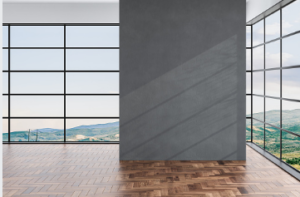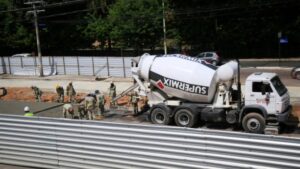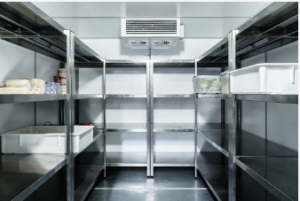Commercial fitouts offer many advantages for businesses, whether renovating an existing workspace or creating a brand-new office space. Not only do they bring your premises up to modern standards, but they also create an inviting environment that promotes productivity.
Selecting the ideal partner is critical to a successful commercial fitouts Melbourne project. Make sure they provide all of your business needs.
Modern Workspaces
 Modern workspaces are an effective way to increase productivity and provide employees with a stimulating workspace. Furthermore, they can leave an impressive impression on clients.
Modern workspaces are an effective way to increase productivity and provide employees with a stimulating workspace. Furthermore, they can leave an impressive impression on clients.
The modern office is ideal for employees to collaborate and generate ideas. However, you must consider your workers’ various tasks, enabling you to customise your commercial fit according to their requirements.
Many companies are now focusing on creating workspaces that are adaptable and customisable. It could include open workspaces or movable partitions.
You can incorporate technology into your office design to enhance the workspace. It could include smartboards that replace whiteboards, announcement displays, and more – saving time and money in the long run.
Furthermore, modern workspaces can be tailored to reflect your company’s culture. It is done by selecting bold colours or adding unique decorations that will stand out.
Digital workspaces provide some of the finest examples available online. This resource can be a great way to get ideas and spark your next office design or fit out project.
Modern fit outs can also be found in the media. People are creating some amazing office designs and fitouts daily, so you will find something that inspires your business venture.
Businesses must strive to stay ahead of the competition with an office that stands out. It attracts new clients and increases profitability, and a modern workspace enhances employee well-being and morale.
Better Employee Well-Being
In today’s business climate, employee well-being has never been more essential. Beyond financial compensation and other benefits, companies prioritising employee well-being can attract and retain talent, boost retention rates, and improve organisational productivity and performance – ultimately leading to improved bottom-line results.
Recent studies demonstrate that workspaces designed with occupant well-being in mind produce better employee work outcomes. Not only do these spaces increase productivity, but they’re also marked by greater comfort and reduced stress levels.
Biophilic workplaces, for instance, integrate natural elements that connect staff to nature and promote better health outcomes such as increased concentration, creativity, and performance. These types of office design can be especially beneficial to organisations with high stress or anxiety levels.
Recent research on the effects of biophilic designs found that people who work in offices that evoke outdoor experiences report higher overall well-being. It was particularly true for those who spend most of their workdays indoors, without access to natural light and colours.
That is why more businesses emphasise creating healthy office environments promoting employee well-being. From calming breakrooms and outdoor “de-stress” zones to yoga studios and fitness facilities, these areas allow employees to unwind from their hectic careers.
Another way to boost the well-being of your team is by implementing sit-to-stand desks, which are ideal for improving posture and relieving stress. They also create a healthier and more productive workspace for employees who require standing during the day due to conditions like fibromyalgia or chronic fatigue syndrome.
Furthermore, these types of spaces can improve productivity and decrease sick days taken by your employees. Sit-to-stand desks offer greater workspace flexibility and make a great addition to any commercial fitout.
In promoting employee well-being in your office, it’s essential to remember that happiness isn’t a passing feeling. Instead, a steady state allows employees to give their best effort at work and home.
Increased Profits
One of the greatest joys of owning a business is watching it blossom and expand. However, maintaining profitability and efficiency are often challenging tasks that can prove costly if done poorly. Commercial fitouts Melbourne provides an affordable solution to this dilemma, designed to save money, maximise efficiency with resources and boost profits.
As previously discussed, a fitout is an investment that will reap rewards in the future. The most apparent advantage is increased productivity from streamlining processes. A redesigned office space also provides improved airflow and natural light, benefiting you and the environment. Furthermore, improved employee morale, higher customer retention rates and reduced absenteeism have all been documented as additional advantages of such an endeavour. A well-crafted fitout will serve you and your staff well for years.
 Selecting the ideal CRM consulting company is essential, so ensure they possess the expertise and capabilities to meet your business requirements. Take time to read reviews and ask questions before selecting; taking care will help guarantee a smooth process.
Selecting the ideal CRM consulting company is essential, so ensure they possess the expertise and capabilities to meet your business requirements. Take time to read reviews and ask questions before selecting; taking care will help guarantee a smooth process. Consumers are increasingly searching for cost-effective solutions to meet their requirements. So naturally, that presents a challenge to frozen food suppliers. But with some creativity and investment, companies can leverage frozen advantages while managing any associated expenses that may have arisen due to shifting consumer demands.
Consumers are increasingly searching for cost-effective solutions to meet their requirements. So naturally, that presents a challenge to frozen food suppliers. But with some creativity and investment, companies can leverage frozen advantages while managing any associated expenses that may have arisen due to shifting consumer demands. Before you start, ensuring you have the right equipment for your needs is important. You’ll need tools like a concrete saw, chisel pliers, and jackhammers to do the job properly. You may also need a power planer for larger jobs and an angle grinder to smooth out rough edges.
Before you start, ensuring you have the right equipment for your needs is important. You’ll need tools like a concrete saw, chisel pliers, and jackhammers to do the job properly. You may also need a power planer for larger jobs and an angle grinder to smooth out rough edges. Refrigerants are used in
Refrigerants are used in  Furniture removal companies offer a wide range of services to help you
Furniture removal companies offer a wide range of services to help you 

